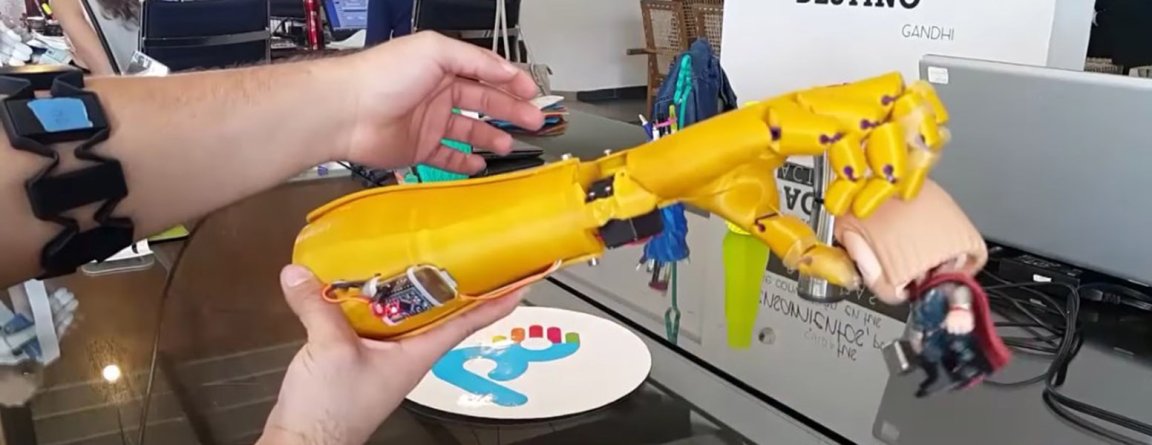
3D printing technology is increasingly being used for medical applications, with printed bones, joints, and organs being developed with functionalities similar to their organic counterparts. A big part of this trend is 3D printing prosthetic limbs. While some companies are treating it as a research focus, others are using 3D tech as a means of social entrepreneurship.
One of the latter companies is Paraguay’s Po. Less than 3 percent of the people in that country who need a prosthetic can afford one. To remedy this, Po uses 3D printing technology to deliver advanced prosthesis in different sizes and colors to the people who can’t afford them.

Over 100 Po hands are in the field right now, but the real game changer is the company’s partnership with Thalmic Labs, creator of the Myo. The Myo uses myoelectric technology to read arm movements and transmit them to electronic devices. This partnership resulted in the MyPo, a 3D printed prosthetic arm that reads arm gestures and turns them into movement.
“At a fraction of the cost, MyPo mirrors the traditional functionality of a prosthetic hand, including several grips, degrees of freedom, and it can even integrate applications that already exist with the Myo armband,” Po co-founder Eric Dijkhuis told TechCrunch.
Po is not the only player in the field of 3D printed or myoelectric prostheses. Some are already offering prosthetic legs, arms, and even faces, all customized to the user’s size. Another company, Motorika, has released the Stradivary, a myoelectric prostheses like MyPo. Still others are even open-sourcing the schematics to build their 3D printed limbs, so one day in the near future, anyone in the world who needs a prosthetic may be able to download and print one for themselves.